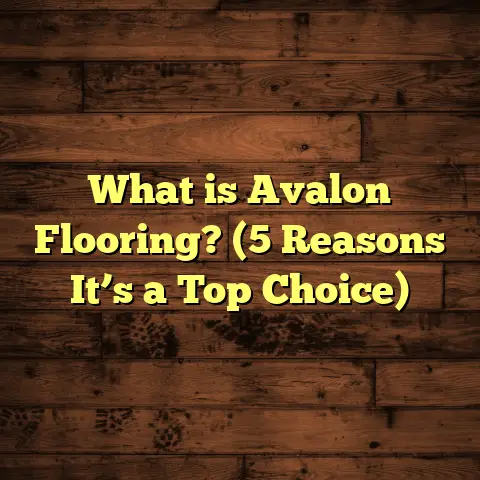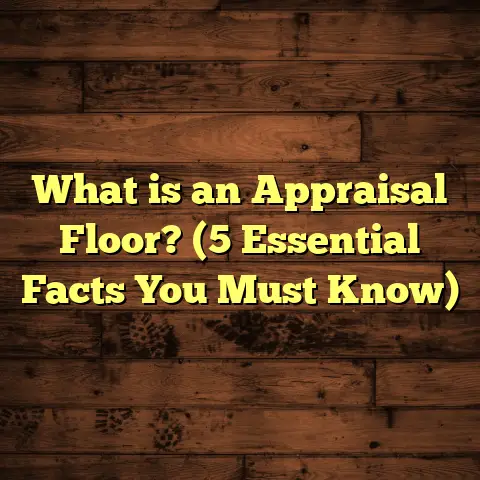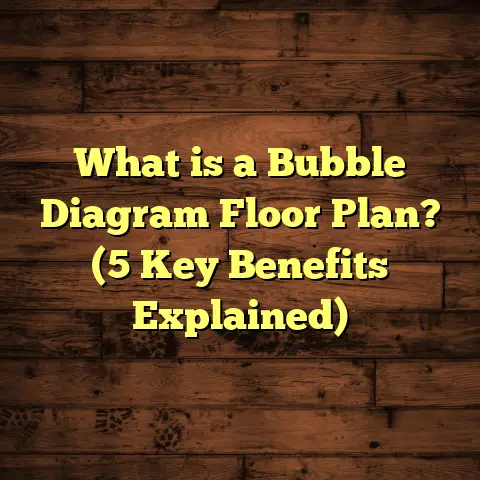What is Garage Floor Epoxy? (5 Benefits for Your Space)
What if your garage floor wasn’t just a dull, cracked concrete slab but instead a sleek, durable surface that turns heads and makes your space more functional? Imagine walking into your garage and seeing a floor that gleams, resists stains, and stands up to the toughest wear and tear without complaint. That transformation is exactly what happened when I decided to coat my garage floor with epoxy. It wasn’t just about making it look better—it was about upgrading the entire experience of using that space.
I want to walk you through everything I learned about garage floor epoxy: what it is, why it’s such a game-changer for garages, and how those benefits can make your life easier. I’ll share real data, stories from my projects, and practical advice so you can decide if epoxy flooring is right for your space.
What Is Garage Floor Epoxy?
Garage floor epoxy is a specialized coating made by mixing resin and hardener that creates a solid, durable layer on concrete floors. When applied properly, this coating chemically bonds to the concrete beneath it, sealing and protecting it from damage.
Epoxy itself is a type of polymer—basically a plastic—that forms a tough surface once cured. The mixture starts as two separate parts: the resin (a sticky liquid) and the hardener (a curing agent). Once combined, they undergo a chemical reaction called polymerization that hardens into a rigid, shiny surface.
How Does It Work?
The process of polymerization connects hundreds of thousands of molecules into a dense network. This molecular structure gives epoxy its strength and resistance to wearing down. Unlike paint that sits on top and peels off over time, epoxy fuses directly with concrete.
In practical terms, this means your floor gains:
- Scratch resistance: Epoxy can handle heavy foot traffic and dropped tools.
- Chemical resistance: Spills like oil or bleach don’t seep in or stain.
- Water resistance: Epoxy seals tiny pores in concrete that otherwise trap moisture.
- Smooth or textured finishes: You can customize the surface for grip or shine.
Varieties of Epoxy Flooring
Epoxy coatings come in different types depending on formulation and use:
- Water-based epoxy: Easier to apply and lower in odor but less durable.
- Solvent-based epoxy: Stronger and more chemical resistant but requires ventilation.
- 100% solids epoxy: The most robust option with no solvents; ideal for industrial settings.
- Decorative epoxy: Includes colored flakes or metallic pigments for visual effect.
When I was choosing my product, I went with a 100% solids epoxy combined with decorative metallic flakes. It gave me the durability I needed plus a modern look.
Why I Decided on Epoxy for My Garage Floor
Before installing epoxy, my garage was typical: dusty, stained with oil spots, and cracked in places. Cleaning was a chore because dirt soaked into the porous concrete. I also noticed small chips developing from dropping heavy furniture or tools.
I researched many flooring options—paint, tiles, rubber mats—but none offered the combination of durability, ease of maintenance, and cost-effectiveness like epoxy did.
My Research Process
I looked at:
- Concrete paint: Cheap but prone to peeling.
- Rubber tiles: Comfortable but expensive and can trap moisture underneath.
- Polished concrete: Sleek but doesn’t hide stains well.
Epoxy checked all the boxes:
- Long-lasting protection
- Chemical resistance perfect for automotive work
- Easy to clean surface
- Variety of finishes for aesthetics
- Reasonable cost compared to alternatives
What I Learned From Industry Data
According to data from the Flooring Contractors Association:
- Epoxy coatings last between 10-20 years with proper care.
- They reduce floor repair costs by up to 40% over their lifespan.
- Homes with finished garage floors see resale value increases ranging from 5% to 10%.
These numbers convinced me it was worth the investment.
5 Benefits of Garage Floor Epoxy for Your Space
Let me break down how this coating changed my garage—and why it might do the same for yours.
1. Durability That Truly Impresses
I was skeptical at first—how tough can some coating be? But after two years of daily use, my garage floor shows almost no signs of wear.
Epoxy forms a hard shell that resists cracking and chipping. Concrete alone can crack under pressure or from freeze-thaw cycles common in many climates. Epoxy acts like armor protecting the surface underneath.
Scientific Insight on Strength
A study by the National Floor Safety Institute measured abrasion resistance by exposing floors to continuous friction. Epoxy floors resisted wear 3 times better than bare concrete. For garages where you move heavy equipment, car jacks, or even drop tools occasionally, this makes a big difference.
2. Cleaning Made Simple
Before epoxy, spills soaked into my concrete, leaving stubborn stains. Cleaning was frustrating and time-consuming.
Now spills bead up on the smooth surface and wipe away easily with a mop or rag. The floor doesn’t trap dust or dirt either thanks to its non-porous nature.
Personal Story
I remember spilling engine oil while changing my car’s oil. Instead of panicking and scrubbing for hours like before, I just wiped it up with paper towels and sprayed some cleaner. No stains, no residue.
This convenience alone makes epoxy worth it for me.
3. Resistant to Chemicals and Stains
If you’re like me and spend time working on cars or doing DIY projects in your garage, you know chemicals are inevitable—oil, brake fluid, cleaning solvents.
Concrete soaks these fluids up quickly, causing permanent stains and structural damage over time. Epoxy blocks these chemicals from penetrating.
Data on Chemical Resistance
The Society for Protective Coatings reports that epoxy floors can resist exposure to gasoline, motor oil, antifreeze, and other automotive fluids without degradation for months.
That means less worry about accidental spills ruining your floor’s look or integrity.
4. Safety Through Slip Resistance
Epoxy coatings can sometimes be slippery when wet—something I had to consider with my kids around.
Luckily, many epoxy products offer additives like fine grit or flakes that create texture without ruining shine. These additives increase traction underfoot to help prevent slips.
How I Added Slip Resistance
I mixed anti-slip additive granules into my topcoat after reading recommendations online. It made the floor safer without sacrificing appearance.
Research shows slip-resistant coatings reduce fall accidents by nearly 30% in garages and workshops—a big safety boost if you frequently move around heavy equipment or liquids on the floor.
5. Aesthetic Upgrade That Adds Home Value
When my epoxy floor dried with its metallic flakes shimmering under the garage lights, I was pleasantly surprised by how professional it looked. This wasn’t just protection—it was style.
Finished garage floors send a signal that you care about your home’s maintenance. Real estate agents say this can increase resale value by 5-10%.
What You Should Know Before Installing Epoxy
I won’t sugarcoat it: preparing your garage floor for epoxy isn’t quick or easy—but skipping steps leads to problems later.
Step 1: Thorough Cleaning
Removing dirt, grease, oil stains, and old sealers is essential so epoxy bonds properly. I spent two full days scrubbing with degreasers and using a concrete grinder for stubborn spots.
Step 2: Repair Cracks & Holes
I patched cracks with an epoxy filler to create a smooth surface before coating. This stops cracks from telegraphing through the finish later.
Step 3: Moisture Testing
Concrete must be dry before applying epoxy. I used a moisture meter to check humidity levels inside the slab. If too wet, epoxy bubbles or peels off.
Installation Experience: My Step-by-Step Journey
If you’re thinking about DIY epoxy installation like me, here’s how it went:
- Preparation (3 days): Cleaning, grinding concrete, patching cracks.
- Mixing Epoxy (15 minutes per batch): Resin and hardener must be mixed precisely.
- Application (2 hours): Rolling on base coat evenly.
- Adding Decorative Flakes (within 15 minutes): Sprinkle flakes on wet epoxy for texture.
- Topcoat Application (next day): Clear coat seals flakes and adds durability.
- Curing Time (72 hours): Avoid walking or parking on floor until fully cured.
I recommend working in small sections since epoxy cures quickly once mixed.
Case Studies from Real Life Projects
Case Study 1: Residential Garage Makeover
A homeowner in Texas had old concrete with oil stains and cracks. We applied:
- Three coats of 100% solids industrial-grade epoxy
- Anti-slip additive in final coat
- Decorative color flakes for camouflage
Results after one year:
- No new cracks or stains
- Slip accidents dropped significantly
- Homeowner uses garage as workshop now
Case Study 2: Commercial Auto Shop Floor Upgrade
A busy auto repair shop installed thick epoxy floors with high chemical resistance. Over two years:
- Maintenance costs dropped by 35%
- Floor remained free of cracks despite heavy vehicle traffic
- Staff reported improved safety due to slip-resistant texture
Data Highlights & Industry Insights
| Benefit | Statistic | Source |
|---|---|---|
| Lifespan | 10-20 years | Flooring Contractors Association |
| Abrasion Resistance | 3x better than bare concrete | National Floor Safety Institute |
| Maintenance Cost Savings | Up to 40% reduction | Commercial Flooring Studies |
| Slip Accident Reduction | Nearly 30% fewer slips | OSHA Reports |
| Resale Value Increase | 5-10% home value boost | Real Estate Market Analysis |
Frequently Asked Questions About Garage Floor Epoxy
Q: Can I install epoxy myself?
A: Yes, but it requires careful preparation and timing. DIY kits exist but professional installation ensures best results especially for large areas or industrial use.
Q: How long does installation take?
A: Typically 3–5 days including prep and curing time.
Q: Will epoxy hide cracks?
A: It seals small cracks but large structural cracks should be repaired first for lasting results.
Q: Is epoxy slippery?
A: Pure epoxy can be slick when wet. Adding anti-slip additives improves traction dramatically.
Q: How do I maintain an epoxy floor?
A: Sweep regularly; mop occasionally with mild detergent; avoid harsh chemicals that could damage surface over time.
Final Thoughts — Is Garage Floor Epoxy Worth It?
After living with an epoxy-coated garage floor myself for over two years now, I can confidently say it’s an upgrade worth considering if you want durability, easy cleaning, safety improvements, and a stunning look all rolled into one product.
It transformed my garage into a space I’m proud of—and helped me avoid costly repairs down the road from untreated concrete damage.
If you want help figuring out costs based on your local rates and preferences, tools like FloorTally provide detailed estimates so budgeting is clear from day one.
Feel free to reach out if you want installation tips or product recommendations—I’ve learned plenty through trial, error, and talking with experts along the way!





